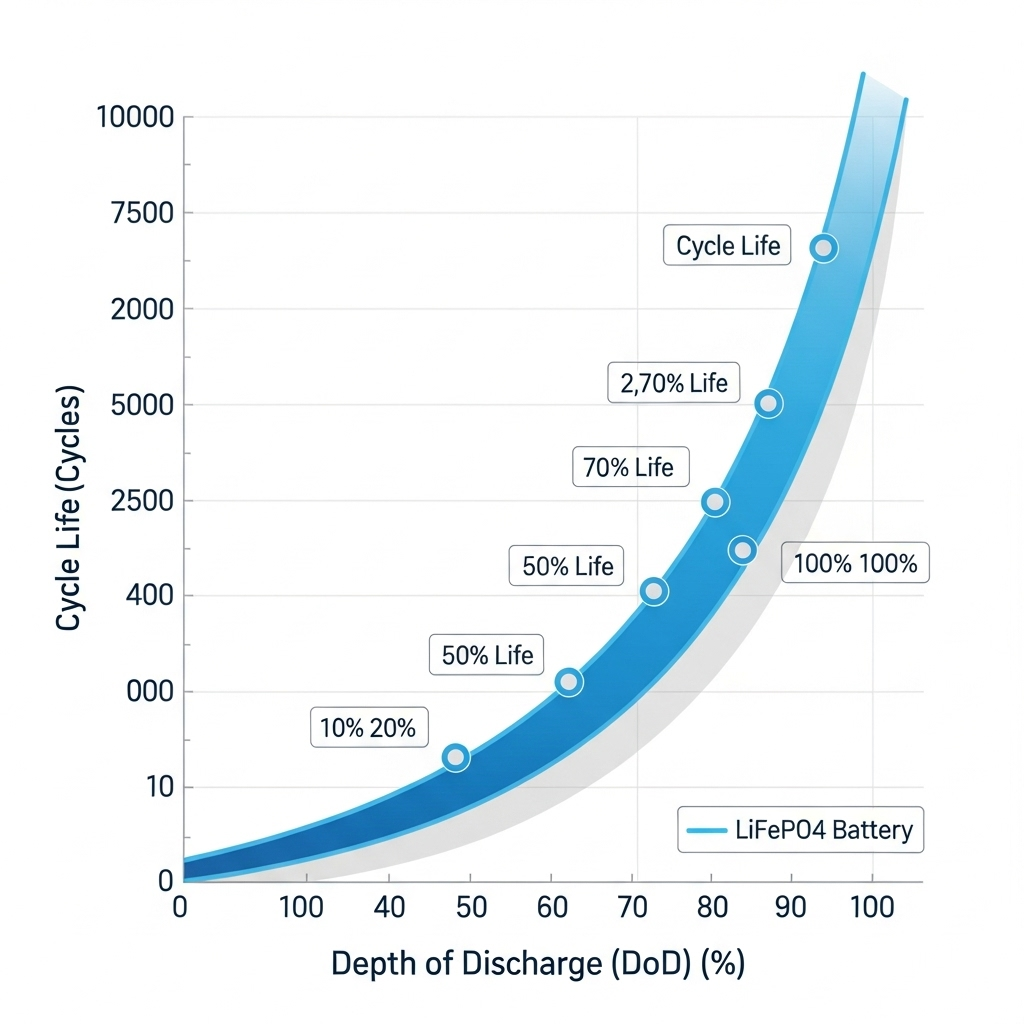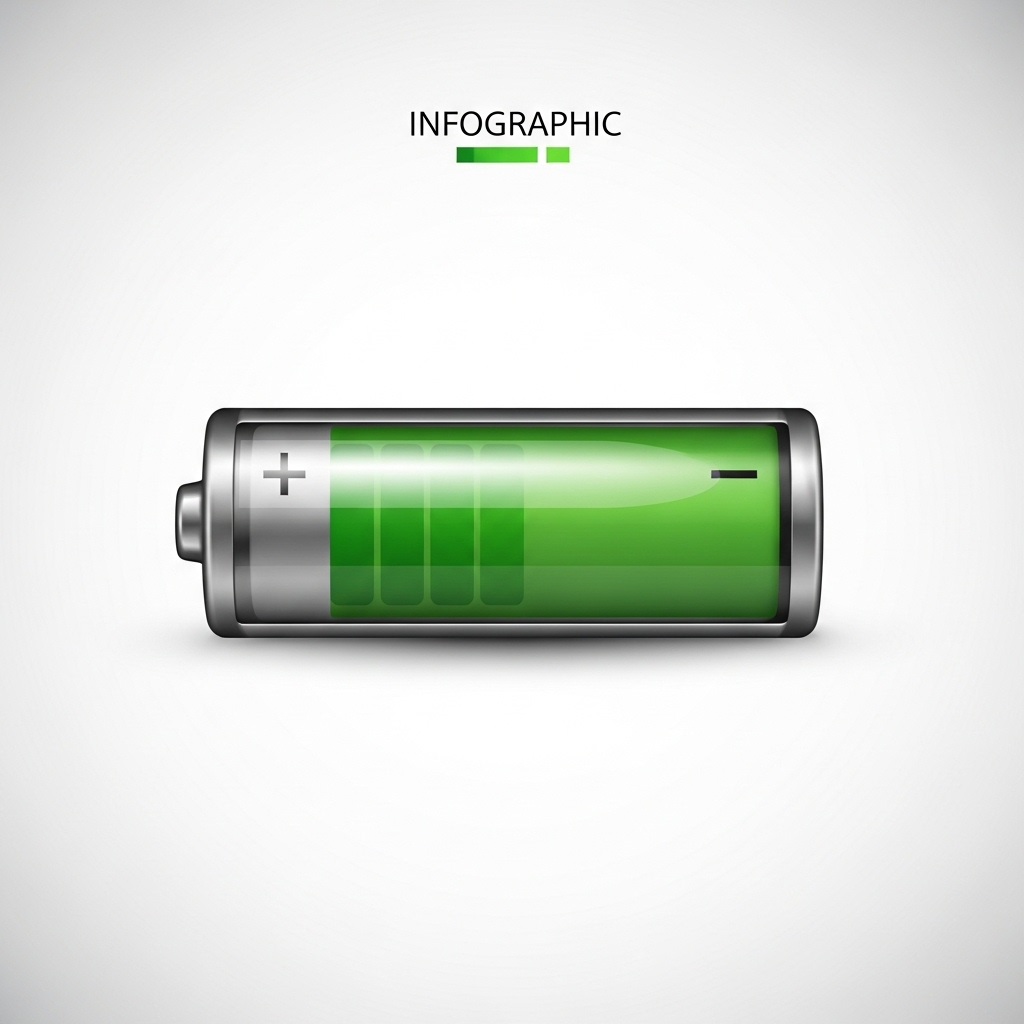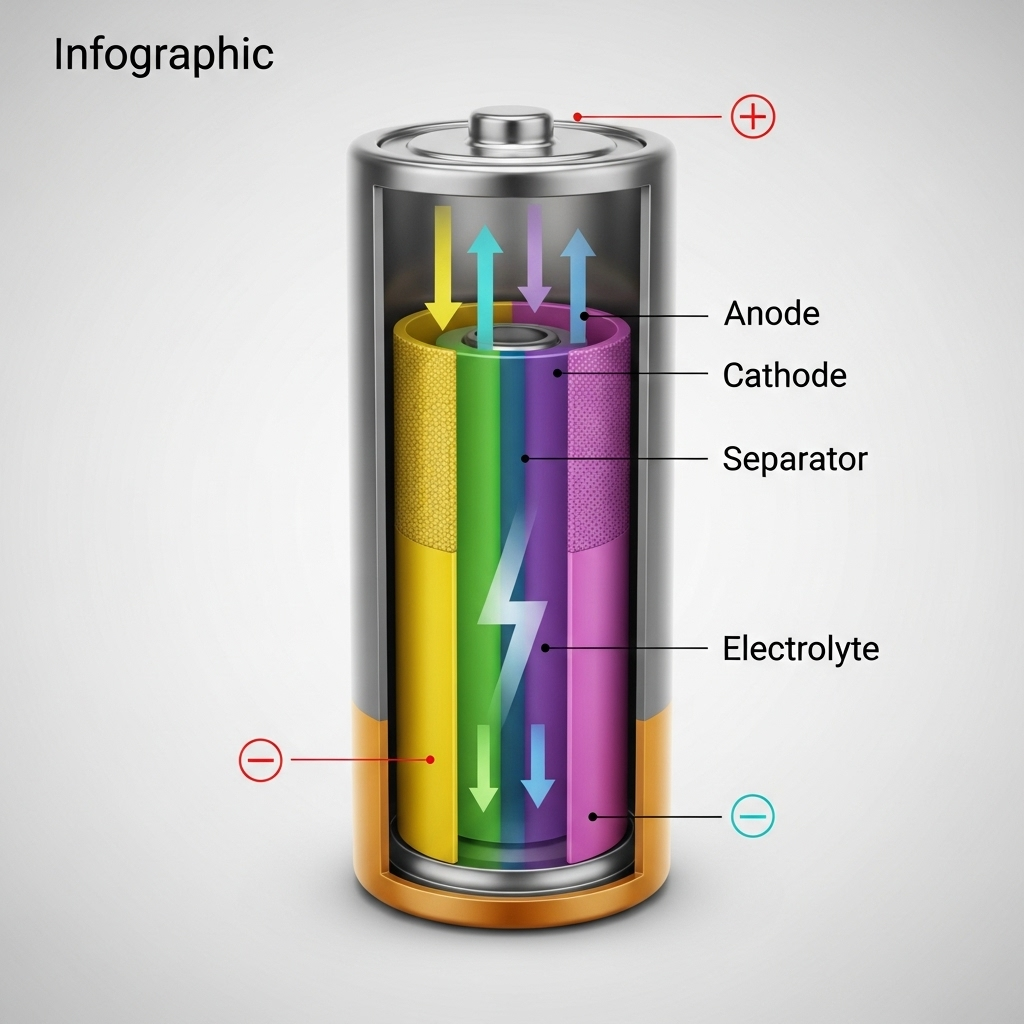Your Lithium Iron Phosphate (LiFePO4) battery is the core of your energy storage system. It represents a significant investment in your energy independence. To get the most out of that investment, you need to ensure it lasts as long as possible. The single most effective way to do this is by managing its daily State of Charge (SOC) window. This isn't about complex technical tweaks; it's about setting simple, smart boundaries for your battery's daily operation. This article will show you exactly how to define these boundaries to significantly extend your battery's lifespan.
What Makes LiFePO4 Batteries Different?
LiFePO4 batteries have become a top choice for solar energy storage for several good reasons. Their primary advantage is safety. They possess excellent thermal stability, making them far less prone to overheating than other lithium-ion chemistries. Beyond safety, their longevity is a key feature. A report from the International Energy Agency, The Role of Critical Minerals in Clean Energy Transitions, highlights that LFP technology offers high durability, capable of up to 2,000 full cycles while maintaining performance. With proper care, this number can be much higher.
The Relationship Between SOC, Depth of Discharge (DoD), and Longevity
To understand battery health, you need to know two terms: State of Charge (SOC) and Depth of Discharge (DoD). SOC is how full your battery is, expressed as a percentage. DoD is the opposite; it's how much energy you have used. If your battery is at 70% SOC, its DoD is 30%. The connection is simple: the less you discharge your battery in each cycle (a shallower DoD), the more cycles it will last. A battery regularly discharged to only 50% of its capacity will last many more years than one drained to 10% every day. Think of it like a car engine; constantly redlining it will cause wear much faster than cruising at a steady speed.
Why High and Low SOC Levels Stress Your Battery
The secret to a long battery life is avoiding the extremes. Both a full charge and a deep discharge put stress on the battery's internal chemistry, accelerating its aging process. Operating within a moderate range is the key.
The Stress of High Voltage (Near 100% SOC)
Keeping a LiFePO4 battery at or near 100% SOC for long periods is detrimental. At this high voltage state, the chemical components inside the battery, like the electrolyte, degrade more quickly. This process, known as calendar aging, happens even if the battery isn't being used. While a 100% charge gives you maximum available energy, making it a daily habit will shorten your battery's overall service life.
The Damage from Low Voltage (Near 0% SOC)
On the other end, deep discharges below 10-20% SOC can cause irreversible damage. When the voltage gets too low, it can lead to the breakdown of internal components. Your battery's built-in Battery Management System (BMS) is designed to prevent a catastrophic failure by shutting down, but repeatedly pushing it to this limit is harmful. Maintaining a buffer at the low end is crucial for long-term health.
Finding the 'Sweet Spot' for Daily Use
For LiFePO4 batteries, the operational 'sweet spot' is widely considered to be between 20% and 80% SOC. Operating within this window minimizes stress at both high and low voltages. Research supports this idea. A study on electric vehicle charging from the International Renewable Energy Agency, Innovation Outlook: Smart charging for electric vehicles, noted that battery degradation is limited if the battery stays within a moderate state of charge. By keeping your battery in this comfortable range for daily use, you dramatically reduce wear and tear.
Defining Your Daily SOC Window: A Step-by-Step Approach
Setting your SOC window is a straightforward process that balances your daily energy needs with battery preservation.
Step 1: Assess Your Daily Energy Needs
First, understand how much energy your home or facility uses on an average day. Review your monitoring software or utility bills. If you have a 15 kWh battery but only use 6 kWh overnight, you only need to use 40% of your battery's capacity. This knowledge allows you to set a discharge limit that meets your needs without unnecessarily draining the battery.
Step 2: Set the Lower SOC Limit (The Floor)
For your lower limit, a conservative setting is best. A floor of 20% to 25% is a great starting point. This provides a reliable buffer for your system. This buffer not only protects the battery but also gives you 'days of autonomy'—a concept highlighted in an IRENA publication on energy for healthcare—ensuring your system remains operational even during a few cloudy days. This enhances system reliability and peace of mind.
Step 3: Set the Upper SOC Limit (The Ceiling)
For the upper limit, aim for 80% to 90% for daily charging. This avoids the stress of a constant 100% charge. You can program your inverter or charge controller to stop charging once it reaches this level. Reserve a full 100% charge for when you absolutely need it, such as before an expected power outage.
Fine-Tuning Your SOC for Different Situations
Your ideal SOC window can change based on your immediate needs. A flexible approach ensures you get the best of both worlds: longevity and readiness.
Practical SOC Windows and Their Impact
The window you choose has a direct effect on cycle life. A tighter window means more cycles. Below is a table illustrating how different daily operating windows can influence your battery's lifespan.
| Daily SOC Window | Typical Depth of Discharge (DoD) | Estimated Cycle Life Increase (vs. 100% DoD) | Best For |
|---|---|---|---|
| 10% - 90% | 80% | Up to 1.5x | Balancing capacity and longevity |
| 20% - 80% | 60% | Up to 2.5x | Maximizing daily cycle life |
| 30% - 70% | 40% | Up to 4x | Extreme longevity focus |
| 0% - 100% | 100% | Baseline | Maximum capacity use (not recommended daily) |
Disclaimer: These figures are estimates. Actual performance depends on battery quality, temperature, and C-rates.
The Role of Your Battery Management System (BMS)
Your SOC settings are only as effective as the system that enforces them. The BMS is the brain of your battery, protecting the cells from over-voltage, under-voltage, and extreme temperatures. It is responsible for executing the charge and discharge limits you set. A high-quality system with a robust BMS is fundamental to achieving these goals. For a deeper look at what defines system quality, you can review this ultimate reference on solar storage performance, which details key metrics for evaluating a system's capabilities.
Smart SOC Management: Your Key to a Lasting Investment
Managing your LiFePO4 battery's daily SOC window is not a complex task, but it delivers powerful results. By avoiding the stress of very high and very low states of charge and operating within a conservative window like 20% to 80%, you can drastically increase the number of cycles your battery will deliver. This simple practice protects your financial investment, improves the reliability of your power supply, and ensures your energy storage system serves you well for many years to come.
Disclaimer: This article provides general information and recommendations. Always consult your battery manufacturer's documentation for specific guidelines and warranty requirements. The information provided is not financial or investment advice.
Frequently Asked Questions
Should I charge my LiFePO4 battery to 100% every day?
For daily use, it is not recommended. Consistently charging to 100% puts stress on the battery and can shorten its lifespan. A daily upper limit of 80-90% is a much better practice for promoting longevity.
What is the lowest SOC I should let my battery reach?
You should avoid regularly discharging your battery below 20%. Setting a lower SOC limit of 20% or even 25% in your system's settings provides a healthy buffer and protects the battery from damage associated with deep discharges.
How often should I do a full 100% charge?
A periodic full 100% charge can be beneficial for calibrating your system's SOC reading and for cell balancing. For most LiFePO4 systems, performing this once every one to three months is sufficient. Always check your manufacturer's specific recommendations.
Does temperature affect my SOC settings?
Yes, temperature plays a critical role. A quality BMS will prevent charging in freezing conditions, which can cause permanent damage. In very hot environments (above 45°C or 113°F), it's wise to lower your upper SOC limit further (e.g., to 80%) to reduce thermal stress, as high temperatures accelerate battery aging. As noted in the Innovation Outlook: Smart charging for electric vehicles, maintaining a stable operating temperature is crucial for reaching maximum lifetime.





Leave a comment
All comments are moderated before being published.
This site is protected by hCaptcha and the hCaptcha Privacy Policy and Terms of Service apply.